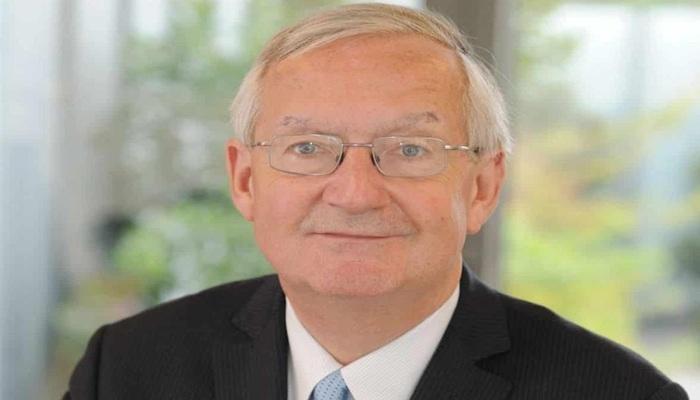Updated Friday, October 10, 2025, at 8:09 PM, Abu Dhabi time. n nA French economic expert has highlighted a significant transformation in the global monetary system, pointing to declining confidence in the U.S. dollar and a growing shift by central banks and major financial institutions toward safe-haven assets such as precious metals. n nPatrick Artus, a French economist, economic advisor at Natixis, and professor at Paris-Panthéon Sorbonne University, emphasized in an exclusive interview with Al-Ain al-Ikhbariya that record-breaking rises in silver and gold prices are not merely short-term market speculation. Instead, they reflect a structural reconfiguration of trust within the international financial system, driven by increasing concerns over political and economic instability in major Western economies. n nSilver prices have surged past the $50 per ounce mark for the first time in decades, propelled by global demand for safe-haven assets amid rising economic and political turbulence in the United States and Europe. n nAccording to Bloomberg data, silver reached approximately $51.24 per ounce during Thursday’s trading sessions before settling near $48.80, marking its highest level since 1980 and surpassing its 2011 peak when prices nearly hit $50. n nAnalysts suggest this surge reflects a strategic shift in behavior among global financial institutions, particularly central banks, which are increasingly purchasing precious metals to diversify their foreign exchange reserves away from the U.S. dollar—a currency affected by current American fiscal policies. n nArtus stated, “What we are witnessing is not just a rise in metal prices, but a structural shift in confidence in the global monetary system.” He added that the simultaneous increase in both silver and gold indicates investors are actively seeking alternatives to the dollar following a year marked by political tensions in the U.S. and weakening trust in American debt instruments. n nHe noted that intensified buying by central banks in Asia, the Middle East, and Eastern Europe reflects efforts to shield reserves from volatility in U.S. monetary policy, especially amid ongoing debates about debt ceiling crises and federal deficits. n nArtus also highlighted silver’s dual role as both a safe-haven investment and a critical industrial component in technology and clean energy sectors, making it more attractive over the medium term compared to gold, which relies more heavily on its safe-haven status. n nHe concluded that if this trend continues, it could lead to a gradual rebalancing of the international financial system, with precious metals playing a larger role in central bank portfolios at the expense of the dollar and euro. n n— news from al-ain news n n\n\n— News Original —\n\nالفضة عند قمة 45 عاما.. قفزة تنذر بتحول نقدي عالمي بعيدا عن الدولار (حوار)\n\nتم تحديثه الجمعة 2025/10/10 08:09 م بتوقيت أبوظبي n nقال خبير اقتصادي فرنسي، إن العالم يشهد حاليا تحولا نقديا عالميا غير مسبوق يعكس تراجع الثقة في الدولار الأمريكي وتصاعد توجه البنوك المركزية والمؤسسات المالية الكبرى نحو الملاذات الآمنة والمعادن الثمينة. n nوأكد الخبير الاقتصادي الفرنسي باتريك أرتوس، المستشار الاقتصادي في Natixis وأستاذ الاقتصاد في جامعة باريس – بانثيون سوربون، في تصريحات خاصة لـ”العين الإخبارية”: أن القفزات القياسية في أسعار الفضة والذهب لا تعكس مجرد مضاربات آنية في الأسواق، بل تعبّر عن إعادة تشكيل خريطة الثقة في النظام المالي الدولي، مع تزايد المخاطر من التقلبات السياسية والمالية في الاقتصادات الغربية الكبرى. n nسجلت أسعار الفضة قفزة تاريخية بتجاوزها حاجز 50 دولارا للأونصة للمرة الأولى منذ عقود، مدفوعة بموجة طلب عالمية على الملاذات الآمنة في ظل تصاعد الاضطرابات الاقتصادية والسياسية في الولايات المتحدة وأوروبا. n nوفي الوقت ذاته، واصل الدولار الأمريكي صعوده أمام العملات الرئيسية، مدعوما بعوامل خارجية مثل الأزمة السياسية في فرنسا والضبابية الاقتصادية في اليابان، رغم استمرار حالة الشلل المالي في واشنطن. n nالفضة تلامس المجد.. الأوقية تتجاوز 50 دولارا لأول مرة منذ 30 عاما n nووفقا لبيانات وكالة بلومبرغ، بلغت أونصة الفضة نحو 51.24 دولار خلال تعاملات الخميس، قبل أن تستقر قرب 48.80 دولار في وقت لاحق، مسجلة بذلك أعلى مستوى لها منذ عام 1980، ومتجاوزة ذروة عام 2011 حين اقتربت الأسعار من حاجز الـ50 دولارا. n nويرى محللون أن هذا الارتفاع يعكس تحولا في سلوك المؤسسات المالية العالمية، وعلى رأسها البنوك المركزية، التي تكثف مشترياتها من المعادن الثمينة في إطار استراتيجية تنويع الاحتياطي النقدي بعيداً عن الدولار، المتأثر بسياسات الإدارة الأمريكية الحالية. n nقال الخبير الاقتصادي الفرنسي باتريك أرتوس: “ما نشهده حاليا ليس مجرد ارتفاع في سعر معدن، بل مؤشر على تغير هيكلي في الثقة بالنظام النقدي العالمي.” n nوأضاف أرتوس أن الارتفاع المتزامن في أسعار الفضة والذهب يعكس بحث المستثمرين عن بدائل حقيقية للدولار بعد عام من التوترات السياسية في الولايات المتحدة وتراجع الثقة في أدوات الدين الأمريكية. n nوأشار إلى أن “التحركات المكثفة من البنوك المركزية في آسيا والشرق الأوسط وأوروبا الشرقية نحو شراء الذهب والفضة تمثل محاولة لحماية الاحتياطيات من تقلبات السياسة النقدية الأمريكية، خصوصا مع تزايد الحديث عن أزمات سقف الدين والعجز الفيدرالي.” n nوأوضح أرتوس أن “الفضة تحديدا تستفيد من دورها المزدوج كملاذ استثماري آمن وكعنصر صناعي رئيسي في قطاعات التكنولوجيا والطاقة النظيفة، مما يجعلها أكثر جاذبية على المدى المتوسط مقارنة بالذهب الذي يعتمد بشكل أكبر على عامل الأمان.” n nواختتم قائلاً إن استمرار هذا الاتجاه قد يؤدي إلى “إعادة توازن تدريجية في النظام المالي الدولي”، حيث تصبح المعادن الثمينة جزءاً أكبر من محافظ البنوك المركزية، على حساب الدولار واليورو.
